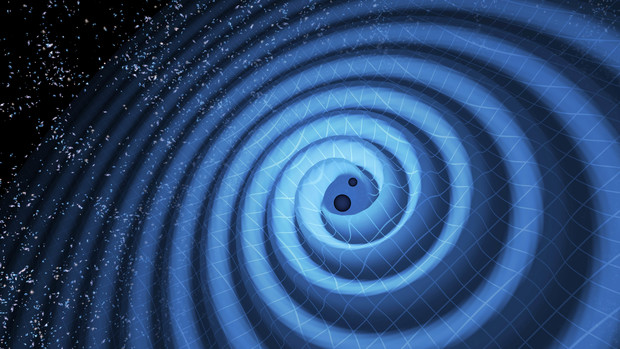
On 15 September 2015, the illusive gravitational waves were detected for the first time at the Laser Interferometer Gravitational-Wave Observatory (LIGO). This came ninety-nine years after Albert Einstein released his revolutionary paper that predicted these ripples in space and time. Two years on, researchers from LIGO have received the 2017 Nobel Prize in Physics for this observation, the most prestigious prize in the physics community! So, what’s all the fuss about?
Back in the seventeenth century, Isaac Newton formulated his theories of what is now called Newtonian Mechanics. This involved some object moving through some space, being acted upon by some force. Makes sense right? That’s how the world that we can see works!
If I push something, it moves…but it turns out to be more complicated than that. The major pitfall of Newtonian Mechanics is that it involves no mechanism to how the mysterious idea of a force works? It just seems to exist, and pop into and out of existence depending on if it is needed or not.
As time moved on, this was accepted and used…until 1915, when along came Albert Einstein with his ground breaking theory of General Relativity. Einstein presented this bizarre idea of gravity being the warping of space and time itself, using the idea of ‘space-time’ being a sheet and the massive objects warp this sheet. Imagine a trampoline: if nothing is on it, it is stretched flat. Now imagine you take a bowling ball, and place it in the middle of the trampoline.
Consequently the trampoline warps to the weight of the ball, creating a dip in the material. If you were to push a marble along the surface, it would move round the bowling ball in a circular shape; it’s path being bent by the presence of the dip in the material.
Now imagine that the trampoline’s material is in fact space-time, the bowling ball is the Sun, and the marble is a planet. We can see that the planet orbits the sun by ‘falling’ into the dip of the warped space-time. Our analogy breaks down here though, as obviously our marble on the trampoline will fall into the middle of the dip.
This is because it is losing energy due to friction; our idea of space-time does not have an analogous idea of friction. Which is good for us, because otherwise we’d be flying towards the Sun! Seems like a peculiar idea, so why did anyone listen to Einstein? Being a good physicist, Einstein presented evidence for his idea: the orbit of Mercury, the innermost planet to the Sun. Using Newtonian Mechanics, Mercury’s orbit is weird! One would expect that Mercury travels around the Sun the same way every time it orbits; this is an elliptical orbit.
However, the true orbit of Mercury seems to change and in fact is not a perfect ellipse, and precesses around the Sun. This problem was called the Precession of the Perihelion. Einstein used his formulations to predict the orbit of Mercury, and did so with extreme precision! It seemed that Newton’s time old theories were wrong, and Einstein’s idea was looking promising!
Then in 1916, Einstein released a paper describing what have come to be known as Gravitational Waves: ripples in space-time itself. If we go back to our metaphor of a trampoline: if I were to flick the trampoline at one side, a ripple would travel along the length of the trampoline moving the material up and down. The same is true for space-time, but in this case the flick has to be an incredibly energetic astronomical event that causes the actual fabric of space and time to ripple!
The event that was recorded by LIGO in 2015 was the merger of two black holes. This is when two black holes orbit each other very closely, and when they get too close they merge into a single black hole, releasing a huge amount of energy. These mysterious entities had masses that were around 36 and 29 times the mass of the Sun: that’s approximately twelve million times the mass of the Earth. It is the most energetic astrophysical event since the Big Bang ever observed.
The waves formed by the black holes have travelled through space for 1.3 billion years before they were detected by the LIGO experiment! As they travel they squash and squeeze space itself, and so as a wave passes you by, your physical shape is squashed and squeezed by the warping of space time. These changes are minute, but were how the LIGO experiment detected the waves. The changes are smaller than an atom, and thus the experiment is extremely sensitive, and have to take into account a lorry driving within miles of the experiment!
The detection of Gravitational Waves is consequently one of the most important discoveries of all time, expanding and drastically changing our knowledge of the fundamental properties of the Universe just that little bit more; well deserving of the Nobel Prize.
